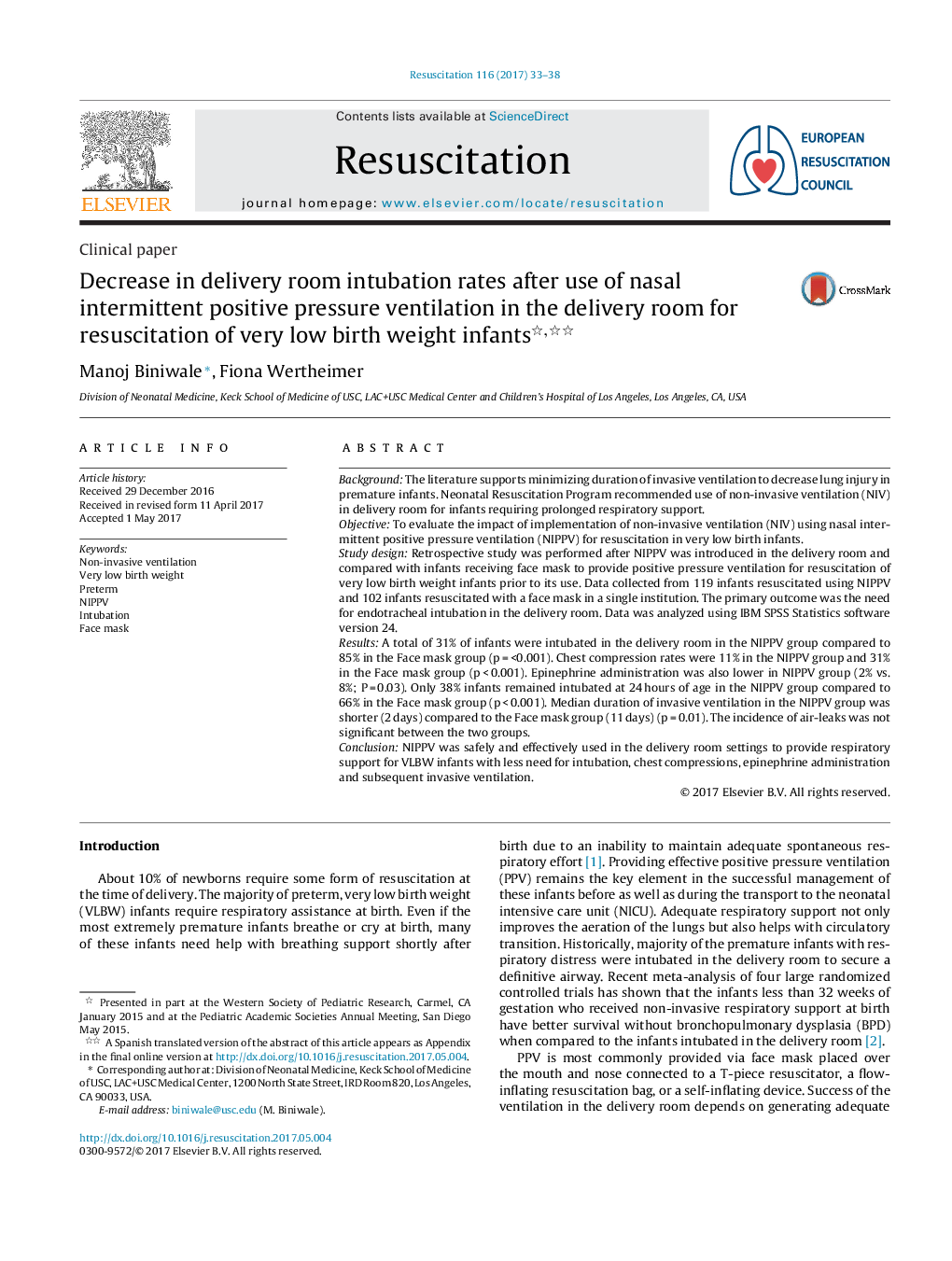| کد مقاله | کد نشریه | سال انتشار | مقاله انگلیسی | نسخه تمام متن |
|---|---|---|---|---|
| 5620117 | 1578968 | 2017 | 6 صفحه PDF | دانلود رایگان |
BackgroundThe literature supports minimizing duration of invasive ventilation to decrease lung injury in premature infants. Neonatal Resuscitation Program recommended use of non-invasive ventilation (NIV) in delivery room for infants requiring prolonged respiratory support.ObjectiveTo evaluate the impact of implementation of non-invasive ventilation (NIV) using nasal intermittent positive pressure ventilation (NIPPV) for resuscitation in very low birth infants.Study designRetrospective study was performed after NIPPV was introduced in the delivery room and compared with infants receiving face mask to provide positive pressure ventilation for resuscitation of very low birth weight infants prior to its use. Data collected from 119 infants resuscitated using NIPPV and 102 infants resuscitated with a face mask in a single institution. The primary outcome was the need for endotracheal intubation in the delivery room. Data was analyzed using IBM SPSS Statistics software version 24.ResultsA total of 31% of infants were intubated in the delivery room in the NIPPV group compared to 85% in the Face mask group (p = <0.001). Chest compression rates were 11% in the NIPPV group and 31% in the Face mask group (p < 0.001). Epinephrine administration was also lower in NIPPV group (2% vs. 8%; P = 0.03). Only 38% infants remained intubated at 24 hours of age in the NIPPV group compared to 66% in the Face mask group (p < 0.001). Median duration of invasive ventilation in the NIPPV group was shorter (2 days) compared to the Face mask group (11 days) (p = 0.01). The incidence of air-leaks was not significant between the two groups.ConclusionNIPPV was safely and effectively used in the delivery room settings to provide respiratory support for VLBW infants with less need for intubation, chest compressions, epinephrine administration and subsequent invasive ventilation.
Journal: Resuscitation - Volume 116, July 2017, Pages 33-38
